|
|
|
Skylite B
|
|
| |
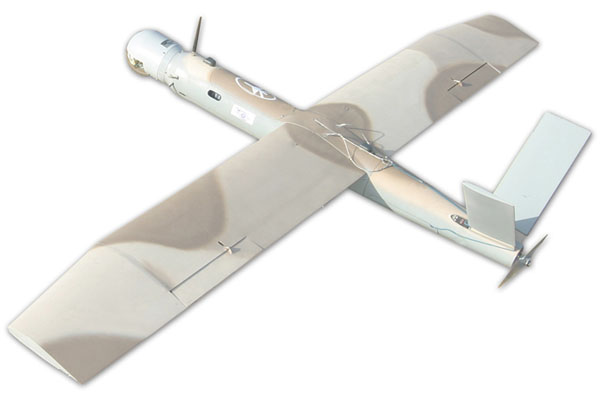
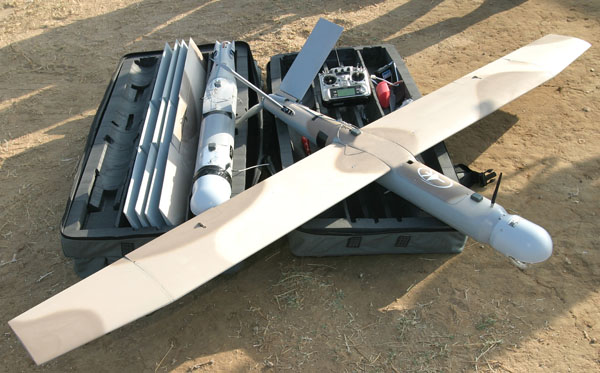
|
| |
| |
|
| |
| |
Skylite B is part of the Skylite family of mini-UAVs that gather intelligence for field and Special Forces using an electro-optic sensor. This family includes the Skylite A, a canister-launched mini-UAV, and the Skylite B mini-UAV, which is man-portable and enables long periods of reconnaissance and surveillance. Both mini-UAVs utilize an electro-optic payload that is stabilized and outfitted with gimbals.
The Skylite B is mainly intended for use by infantry forces deployed up to battalion level and is capable of staying aloft for more than one-and-a-half hours and handles weather changes well.
A major innovation of the new mini-UAV is its immediate reusability, which is enabled by landing the vehicle with a parachute and air bag and launching it using a catapult. In addition, the Skylite B is characterized by simple operation of advanced command modes from a ground station.
The Skylite B system was especially designed to provide a solution for gathering intelligence in a variety of complex mission scenarios such as continuous tracking of a static target, surveillance of a crowded urban area, scanning an axis, accompanying a combat force, tracking personnel and vehicles, as well as directing a combat force to its target.
During the demonstration, the IDF was shown the new mini-UAV's capabilities to provide real-time quality intelligence to a deployed infantry unit, and its potential to deal with various mission scenarios, such as on-going urban security, as well as scenarios occurring in traditional warfare situations. This was achieved within the required data flow, accuracy and picture quality ranges. The demonstration was carried out successfully in harsh weather conditions consisting of rain and strong winds.
The system design was based on several main parameters that mini-UAV systems require to handle complex flight scenarios during field use. These include tracking personnel and vehicles, capability of tracking stationary and mobile targets, very quick return-to-flight readiness in the field and simple operation.
|
| |
|
| |
The system provides a qualitative response to operational scenarios of Low Intensity Conflict, in various operational configurations such as urban warfare in routine operational activities, as well as scenarios performed in comprehensive warfare outlines.
SkyLite B system provides surveillance and reconnaissance solution in a variety of complex operational scenarios, such as: Continuous tracking of static and moving targets – vehicles and human beings
-
Maintaining visual contact with a point of interest
-
Searching dense urban environment
-
Searching a route
-
Accompanying a force
-
Directing a force to destination
|
| |
|
| |
SkyLite B system includes a wide variety of technical capabilities enabling the implementation of the design considerations:
-
A high-resolution, gimbaled and stabilized, electro-optic, day and night sensor including a gimbaled navigation system, enabling recognition of an armed person and identification of a vehicle, from operational flight altitude.
-
The ability to fly at a wide range of velocities, using multiple controlling surfaces; flaps (option), ailerons and V tail, enabling prompt response to changes in the operational scenario in which the user operates.
-
Advanced control capabilities using sophisticated flight modes.
|
|
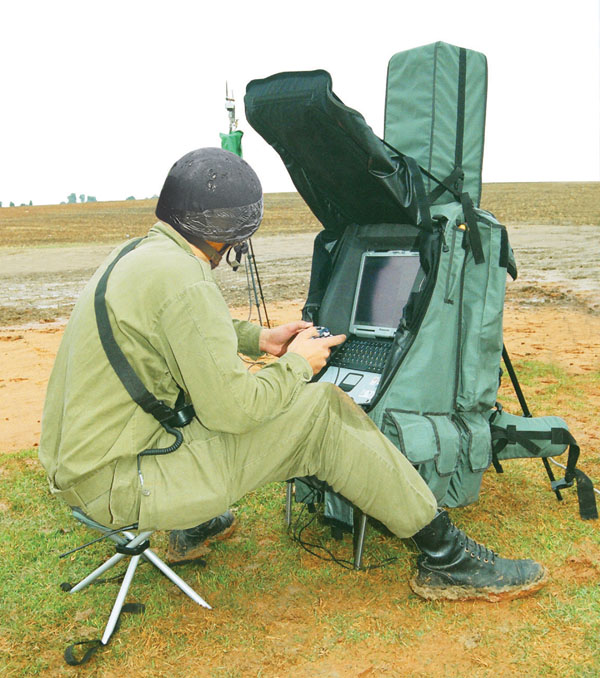
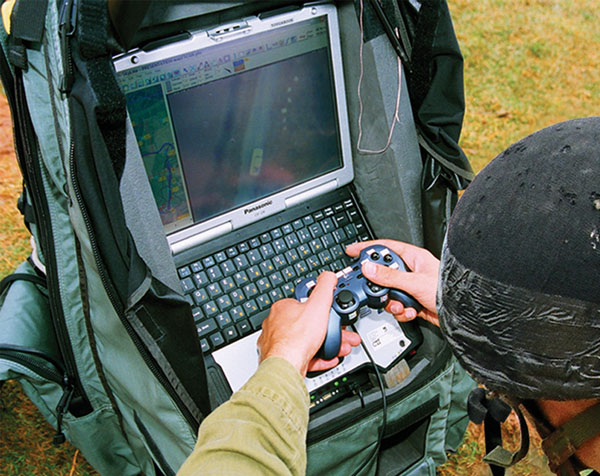
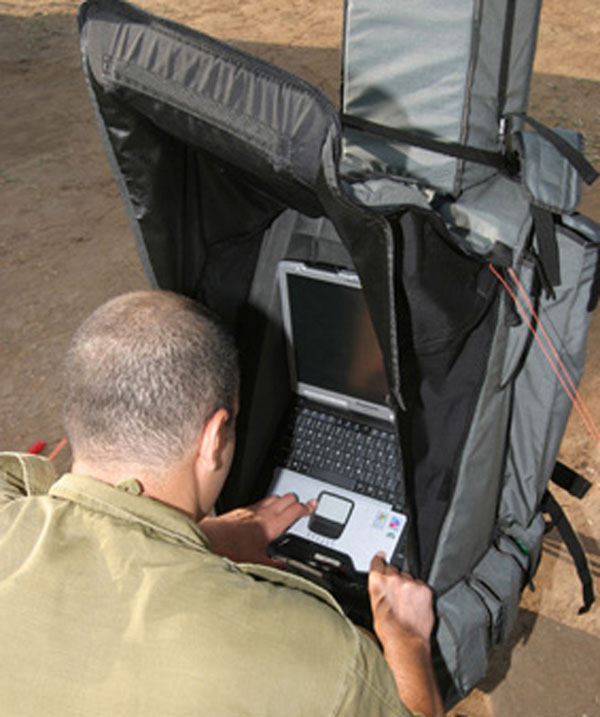 |
| |
The design approach for the flight modes of the SkyLite B systems is that sensor control is independent of the platform control, i.e., controlling the flight and controlling the sensor are independent of each other. This capability enables the implementation of some of the more sophisticated flight modes.
-
Integrated electro-optic tracker that enables autonomous tracking of stationary and moving targets without human intervention
-
Maintaining accurate and autonomous observation on a point of interest
-
Long endurance – more than 90 min operational time
-
Simple and intuitive operation – HOTAS based MMI (Hands on Throttle and Stick) – all of the major and critical operations are completed using a joystick. This feature was implemented using vast human engineering experience in a variety of operational combat systems.
-
Withstanding strong winds of 30 knots, enabling continuous mission operation in difficult wind conditions while maintaining the trajectory (angular state).
-
Reliable and coherent launch and recovery methods:
Launching using a catapult
Recovery using a parachute and an air bag
-
Fast return to operational flight readiness in the field
-
A complete system is carried by a team of two soldiers, and can be operated by one operator.
|
|
|
| |
Mission - Stealthy, severe weather, under
the clouds ISR, for immediate response
controlled by a field operator / commander.
A complete system is carried by a team of
two in special backpacks
Platform - Wide flight velocity range,
30 knots wind resistance, capability of
carrying payloads up to 1.2 kg
Payload - High resolution, day/night, wide
Field Of Regard (FOR), stabilized,
on-gimbal navigation system yields highly
accurate pointing / targeting capabilities
Ground Control Station - Advanced, yet
easy and intuitive flight and payload control
modes, based on open architecture that
enables high modularity
Auto EO Video tracker - Enables
autonomous target tracking |
| |
| |
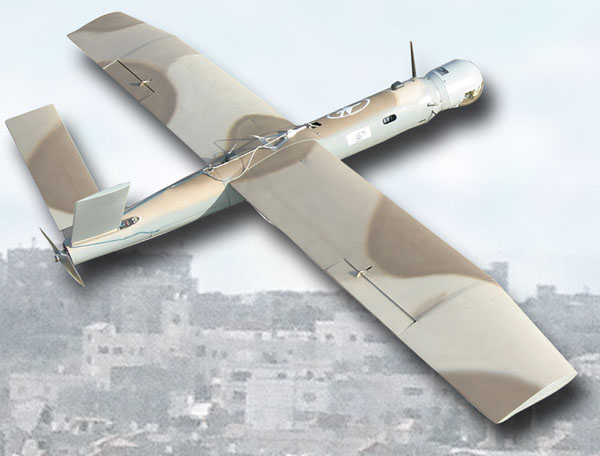 |
| |
| |
SkyLite B Shows Exceptional Results in
Interoperability with Other UAVs |
| |
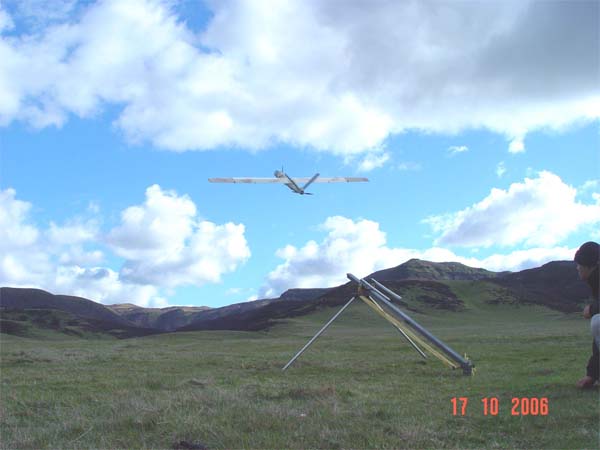 |
| |
November 20, 2006
RAFAEL reveals excellent results for the SkyLite B, mini-UAV in flight demonstrations held in Australia and New Zealand last month.
In cooperation with RAFAEL's partner in both Australia and New Zealand, Codarra Advanced Systems, a series of flight demonstrations were held first at Waiouru, New Zealand Army's military exercise and training facility for over 100 official government and military representatives. The SkyLite B completed several flights; some in extreme weather conditions of -6°C and winds of 35 knots constant and wind gusts of 55 knots. In those flights, the SkyLite B was able to locate and persistently track specific ground targets, move between targets, while at the same time, and despite the very high and gusty winds, relay impressively stabilized imagery.
The SkyLite B's aerodynamic design provides a very stable ISR platform, which combined with a unique 3 axis inertially stabilised gimbal and coupled with proprietary ground exploitation software, allows for fully stabilised and GPS marked imagery to be relayed in real time to the ground control station. This was of particular interest to the audience, which saw the benefits for specific targeting and battle damage assessment (BDA) by supporting ground and air forces. Other positive comments made by New Zealand Army officers related to the SkyLite's robustness, power and ability to take off, fly and safely land using a detachable parachute and airbag in extreme weather conditions.
"We are proud of the fact that SkyLite B is able to carry out missions in such extreme, windy conditions and low temperatures, which are normally highly challenging for mini-UAV's, " says Mr. David Stemmer, Corporate VP and General Manager Systems Division at RAFAEL.
The SkyLite B capabilities were also put to the test with other UAVs in shared mission scenarios. During military to military demonstrations requested by New Zealand and Australian Defense staff US Navy personnel flew an Advanced Ceramics Research’s Silver Fox UAV jointly with the SkyLite B. Operators successfully overcame demanding weather conditions to demonstrate tactics, techniques and procedures that the New Zealand and Australian forces are evaluating for their needs. Mission objectives included flying in common air space at different altitudes and passing target information in a coordinated surveillance and reconnaissance missions.
In Australia, the demonstrations were observed by personnel from the Australian Army, Special Forces, The Australian Defence Force Capability Development Division and the Australian Defence Material Organisation. The Australian demonstration was also very successful and has received very positive feedback. As was done in New Zealand, at the end of the mission the SkyLite B succeeded in landing accurately and allowed the crew to display a quick recovery and immediate relaunch. |
| |
| |
Extended Range, Longer Endurance and Secure Data Link for SkyLite B |
| |
June 3, 2007
RAFAEL proud to disclose an improved version of its SkyLite B, mini-UAV. The new version features a range of over 35 km, flight endurance of up to 3 hours and a secure digital data link.
The SkyLite B, recently combat proven, is a man-portable or vehicle mounted, mini-UAV system that enables long periods of stealthy reconnaissance and surveillance during the day, at night, in rain and in high winds of 30 knots. The SkyLite B comprises advanced gimbaled and stabilized electro-optic payloads, a built-in electro-optical tracker and a camera guide mode which allows the system to autonomously and continuously track a moving target and provides extremely high resolution images with highly accurate targeting information.
In addition, the SkyLite B system also includes a ground station comprising advanced C2 capabilities, as well as image processing technology developed by RAFAEL.
The standard SkyLite B configuration uses an analog video link with a flight endurance of 90 minutes and an operational radius of range of up to 10 km. By adding a more powerful battery and extended wing tips the new SkyLite B configuration can fly for up to three hours and by using the same airframe, Rafael has allowed the field operator to choose between the configurations according to their tactical requirements. In addition, the new configuration can have a secure video data link extending its mission range to over 35 km. The new version adds just 1.5 kilograms to the original 6.5 kg platform and its ground station can also be operated from a stationary structure or field vehicle.
This upgraded SkyLite B also includes additional features for better field use such as speedier assembly, which requires no tools and faster turn around time; always an asset in field operation. |
| |
| |
| |
|
| |
| |
Weight ( Air Vehicle ): 6 kg ( 13.22 lbs )
Total system weight: ( 3 UAV's, 1 GCS, 1 launcher, communication, 2 carrying bags, accessories ) : 39 kg
Dimensions : Diameter – 12cm ( 4.7in )
Length – 115cm ( 3.77 ft )
Wing span – 240cm ( 7.87 ft )
Propulsion: Electrical
Wind resistance: 30 knots
Cruise Speed: 37 - 54 knots ( 70 – 100 km/h )
Flight Altitude: Operational : 100-600 m (300 to 2000 ft) above ground level
Operational endurance: More than 90 minutes
Operational range: 10 km operational radius
Payloads: Electro-optic , gimbaled and stabilized payloads
Day - Color CCD:
-
x10 continuance zoom : NFOV - 5.2º , WFOV 47º
-
Dimensions: Overall length: 160 mm, max. / Diameter: 125mm
-
Weight : 750 gr
-
Video NTSC or PAL
Night - Low light level black and white sensors
-
x10 continuance zoom : NFOV – 7.3º , WFOV 65º
-
ow light level operation with sensitivity of 0/001 Lx
-
Dimensions: Overall length: 175 mm, Max. diameter: 147mm
-
Weight : 950 gr
-
Video NTSC or PAL
Automatic video tracker
Automatic Launch: Catapult
Automatic Recovery: Parachute and air bag
Crew: Carrying - 2 ( Full system – 3 AV & GCS ), operation – 1
Return to operation: 15 min
Controlling surfaces: 2 ailerons, V tail, 2 flaps ( option )
Ground Control Station: Laptop
Batteries: Rechargeable ( Lithium Polymer ) |

|
